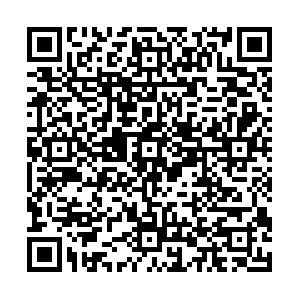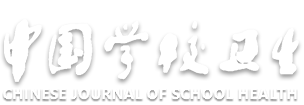| [1] |
NICKLA D L, WALLMAN J. The multifunctional choroid[J]. Prog Retin Eye Res, 2010, 29(2): 144-168. doi: 10.1016/j.preteyeres.2009.12.002
|
| [2] |
TROILO D, SMITH E L, NICKLA D L, et al. IMI-report on experimental models of emmetropization and myopia[J]. Invest Ophthalmol Vis Sci, 2019, 60(3): M31-M88. doi: 10.1167/iovs.18-25967
|
| [3] |
WALLMAN J, WILDSOET C, XU A, et al. Moving the retina: choroidal modulation of refractive state[J]. Vision Res, 1995, 35(1): 37-50. doi: 10.1016/0042-6989(94)E0049-Q
|
| [4] |
JIN P, ZOU H, ZHU J, et al. Choroidal and retinal thickness in children with different refractive status measured by swept-source optical coherence tomography[J]. Am J Ophthalmol, 2016, 168: 164-176. doi: 10.1016/j.ajo.2016.05.008
|
| [5] |
JIN P, ZOU H, XU X, et al. Longitudinal changes in choroidal and retinal thicknesses in children with myopic shift[J]. Retina, 2019, 39(6): 1091-1099. doi: 10.1097/IAE.0000000000002090
|
| [6] |
MORIYAMA M, OHNO-MATSUI K, FUTAGAMI S, et al. Morphology and long-term changes of choroidal vascular structure in highly myopic eyes with and without posterior staphyloma[J]. Ophthalmology, 2007, 114(9): 1755-1762. doi: 10.1016/j.ophtha.2006.11.034
|
| [7] |
READ S A, ALONSO-CANEIRO D, VINCENT S J, et al. Longitudinal changes in choroidal thickness and eye growth in childhood[J]. Invest Ophthalmol Vis Sci, 2015, 56(5): 3103-3112. doi: 10.1167/iovs.15-16446
|
| [8] |
NISHIDA Y, FUJIWARA T, IMAMURA Y, et al. Choroidal thickness and visual acuity in highly myopic eyes[J]. Retina, 2012, 32(7): 1229-1236. doi: 10.1097/IAE.0b013e318242b990
|
| [9] |
WANG N K, LAI C C, CHOU C L, et al. Choroidal thickness and biometric markers for the screening of lacquer cracks in patients with high myopia[J]. PLoS One, 2013, 8(1): e53660. doi: 10.1371/journal.pone.0053660
|
| [10] |
ULAGANATHAN S, READ S A, COLLINS M J, et al. Daily axial length and choroidal thickness variations in young adults: associations with light exposure and longitudinal axial length and choroid changes[J]. Exp Eye Res, 2019, 189: 107850. doi: 10.1016/j.exer.2019.107850
|
| [11] |
OSTRIN L A, HARB E, NICKLA D L, et al. IMI-the dynamic choroid: new insights, challenges, and potential significance for human myopia[J]. Invest Ophthalmol Vis Sci, 2023, 64(6): 4. doi: 10.1167/iovs.64.6.4
|
| [12] |
WU H, CHEN W, ZHAO F, et al. Scleral hypoxia is a target for myopia control[J]. Proc Natl Acad Sci USA, 2018, 115(30): E7091-E7100.
|
| [13] |
LIU Y, WANG L, XU Y, et al. The influence of the choroid on the onset and development of myopia: from perspectives of choroidal thickness and blood flow[J]. Acta Ophthalmol, 2021, 99(7): 730-738. doi: 10.1111/aos.14773
|
| [14] |
PLATZL C, KASER-EICHBERGER A, BENAVENTE-PEREZ A, et al. The choroid-sclera interface: an ultrastructural study[J]. Heliyon, 2022, 8(5): e09408. doi: 10.1016/j.heliyon.2022.e09408
|
| [15] |
FIELDS M A, DEL PRIORE L V, ADELMAN R A, et al. Interactions of the choroid, Bruch's membrane, retinal pigment epithelium, and neurosensory retina collaborate to form the outer blood-retinal-barrier[J]. Prog Retin Eye Res, 2020, 76: 100803. doi: 10.1016/j.preteyeres.2019.100803
|
| [16] |
ALM A, BILL A. Ocular and optic nerve blood flow at normal and increased intraocular pressures in monkeys (Macaca irus): a study with radioactively labelled microspheres including flow determinations in brain and some other tissues[J]. Exp Eye Res, 1973, 15(1): 15-29. doi: 10.1016/0014-4835(73)90185-1
|
| [17] |
FUJIWARA A, SHIRAGAMI C, SHIRAKATA Y, et al. Enhanced depth imaging spectral-domain optical coherence tomography of subfoveal choroidal thickness in normal Japanese eyes[J]. Jpn J Ophthalmol, 2012, 56(3): 230-235. doi: 10.1007/s10384-012-0128-5
|
| [18] |
QI Y, LI L, ZHANG F. Choroidal thickness in Chinese children aged 8 to 11 years with mild and moderate myopia[J]. J Ophthalmol, 2018, 2018: 7270127.
|
| [19] |
DELSHAD S, COLLINS M J, READ S A, et al. The time course of the onset and recovery of axial length changes in response to imposed defocus[J]. Sci Rep, 2020, 10(1): 8322. doi: 10.1038/s41598-020-65151-5
|
| [20] |
SWIATCZAK B, SCHAEFFEL F. Emmetropic, but not myopic human eyes distinguish positive defocus from calculated blur[J]. Invest Ophthalmol Vis Sci, 2021, 62(3): 14. doi: 10.1167/iovs.62.3.14
|
| [21] |
KUGELMAN J, ALONSO-CANEIRO D, READ S A, et al. Automatic choroidal segmentation in OCT images using supervised deep learning methods[J]. Sci Rep, 2019, 9(1): 13298. doi: 10.1038/s41598-019-49816-4
|
| [22] |
ZHANG H, YANG J, ZHOU K, et al. Automatic segmentation and visualization of choroid in OCT with knowledge infused deep learning[J]. IEEE J Biomed Health Inform, 2020, 24(12): 3408-3420. doi: 10.1109/JBHI.2020.3023144
|
| [23] |
周愉, 张敏, 朱瑜洁, 等. 深度学习在脉络膜分割中的应用研究进展[J]. 国际眼科杂志, 2023, 23(6): 1007-1011. https://www.cnki.com.cn/Article/CJFDTOTAL-GJYK202306025.htmZHOU Y, ZHANG M, ZHU Y J, et al. Research progress on the application of deep learning in choroidal segmentation[J]. Int Eye Sci, 2023, 23(6): 1007-1011. (in Chinese) https://www.cnki.com.cn/Article/CJFDTOTAL-GJYK202306025.htm
|
| [24] |
CHAKRABORTY R, READ S A, COLLINS M J. Monocular myopic defocus and daily changes in axial length and choroidal thickness of human eyes[J]. Exp Eye Res, 2012, 103: 47-54. doi: 10.1016/j.exer.2012.08.002
|
| [25] |
HOSEINI-YAZDI H, VINCENT S J, COLLINS M J, et al. Regional alterations in human choroidal thickness in response to short-term monocular hemifield myopic defocus[J]. Ophthalmic Physiol Opt, 2019, 39(3): 172-182. doi: 10.1111/opo.12609
|
| [26] |
LIM J I, FLOWER R W. Indocyanine green angiography[J]. Int Ophthalmol Clin, 1995, 35(4): 59-70.
|
| [27] |
SPAIDE R F, KLANCNIK J M, COONEY M J. Retinal vascular layers imaged by fluorescein angiography and optical coherence tomography angiography[J]. JAMA Ophthalmol, 2015, 133(1): 45-50. doi: 10.1001/jamaophthalmol.2014.3616
|
| [28] |
WEI X, BALNE P K, MEISSNER K E, et al. Assessment of flow dynamics in retinal and choroidal microcirculation[J]. Surv Ophthalmol, 2018, 63(5): 646-664. doi: 10.1016/j.survophthal.2018.03.003
|
| [29] |
IWASE T, YAMAMOTO K, RA E, et al. Diurnal variations in blood flow at optic nerve head and choroid in healthy eyes: diurnal variations in blood flow[J]. Medicine (Baltimore), 2015, 94(6): e519. doi: 10.1097/MD.0000000000000519
|
| [30] |
DE CARLO T E, ROMANO A, WAHEED N K, et al. A review of optical coherence tomography angiography (OCTA)[J]. Int J Retina Vitreous, 2015, 1: 5. doi: 10.1186/s40942-015-0005-8
|
| [31] |
PONGSACHAREONNONT P, SOMKIJRUNGROJ T, ASSAVAPON-GPAIBOON B, et al. Foveal and parafoveal choroidal thickness pattern measuring by swept source optical coherence tomography[J]. Eye (Lond), 2019, 33(9): 1443-1451. doi: 10.1038/s41433-019-0404-4
|
| [32] |
XIONG S, HE X, ZHANG B, et al. Changes in choroidal thickness varied by age and refraction in children and adolescents: a 1-year longitudinal study[J]. Am J Ophthalmol, 2020, 213: 46-56. doi: 10.1016/j.ajo.2020.01.003
|
| [33] |
LIN C Y, HUANG Y L, HSIA W P, et al. Correlation of choroidal thickness with age in healthy subjects: automatic detection and segmentation using a deep learning model[J]. Int Ophthalmol, 2022, 42(10): 3061-3070. doi: 10.1007/s10792-022-02292-8
|
| [34] |
BROWN J S, FLITCROFT D I, YING G S, et al. In vivo human choroidal thickness measurements: evidence for diurnal fluctuations[J]. Invest Ophthalmol Vis Sci, 2009, 50(1): 5-12. doi: 10.1167/iovs.08-1779
|
| [35] |
SAYIN N, KARA N, PEKEL G, et al. Choroidal thickness changes after dynamic exercise as measured by spectral-domain optical coherence tomography[J]. Ind J Ophthalmol, 2015, 63(5): 445-450. doi: 10.4103/0301-4738.159884
|
| [36] |
OSTRIN L A, JNAWALI A, CARKEET A, et al. Twenty-four hour ocular and systemic diurnal rhythms in children[J]. Ophthalmic Physiol Opt, 2019, 39(5): 358-369. doi: 10.1111/opo.12633
|
| [37] |
KIM M, KIM S S, KWON H J, et al. Association between choroidal thickness and ocular perfusion pressure in young, healthy subjects: enhanced depth imaging optical coherence tomography study[J]. Invest Ophthalmol Vis Sci, 2012, 53(12): 7710-7717. doi: 10.1167/iovs.12-10464
|
| [38] |
SANSOM L T, SUTER C A, MCKIBBIN M. The association between systolic blood pressure, ocular perfusion pressure and subfoveal choroidal thickness in normal individuals[J]. Acta Ophthalmol, 2016, 94(2): e157-e158.
|
| [39] |
READ S A, FUSS J A, VINCENT S J, et al. Choroidal changes in human myopia: insights from optical coherence tomography imaging[J]. Clin Exp Optom, 2019, 102(3): 270-285. doi: 10.1111/cxo.12862
|
| [40] |
JONAS J B, WANG Y X, DONG L, et al. Advances in myopia research anatomical findings in highly myopic eyes[J]. Eye Vis (Lond), 2020, 7: 45. doi: 10.1186/s40662-020-00210-6
|
| [41] |
PROUSALI E, DASTIRIDOU A, ZIAKAS N, et al. Choroidal thickness and ocular growth in childhood[J]. Surv Ophthalmol, 2021, 66(2): 261-275. doi: 10.1016/j.survophthal.2020.06.008
|
| [42] |
READ S A, COLLINS M J, VINCENT S J, et al. Choroidal thickness in myopic and nonmyopic children assessed with enhanced depth imaging optical coherence tomography[J]. Invest Ophthalmol Vis Sci, 2013, 54(12): 7578-7586. doi: 10.1167/iovs.13-12772
|
| [43] |
ZHANG S, ZHANG G, ZHOU X, et al. Changes in choroidal thickness and choroidal blood perfusion in Guinea Pig Myopia[J]. Invest Ophthalmol Vis Sci, 2019, 60(8): 3074-3083. doi: 10.1167/iovs.18-26397
|
| [44] |
AGAWA T, MIURA M, IKUNO Y, et al. Choroidal thickness measurement in healthy Japanese subjects by three-dimensional high-penetration optical coherence tomography[J]. Graefes Arch Clin Exp Ophthalmol, 2011, 249(10): 1485-1492. doi: 10.1007/s00417-011-1708-7
|
| [45] |
HARB E, HYMAN L, GWIAZDA J, et al. Choroidal thickness profiles in myopic eyes of young adults in the correction of myopia evaluation trial cohort[J]. Am J Ophthalmol, 2015, 160(1): 62-71. doi: 10.1016/j.ajo.2015.04.018
|
| [46] |
LI X Q, JEPPESEN P, LARSEN M, et al. Subfoveal choroidal thickness in 1323 children aged 11 to 12 years and association with puberty: the Copenhagen child cohort 2000 eye study[J]. Invest Ophthalmol Vis Sci, 2014, 55(1): 550-555. doi: 10.1167/iovs.13-13476
|
| [47] |
TAN C S, CHEONG K X, LIM L W, et al. Topographic variation of choroidal and retinal thicknesses at the macula in healthy adults[J]. Br J Ophthalmol, 2014, 98(3): 339-344. doi: 10.1136/bjophthalmol-2013-304000
|
| [48] |
LI W, JIANG R, ZHU Y, et al. Effect of 0.01% atropine eye drops on choroidal thickness in myopic children[J]. J Fr Ophtalmol, 2020, 43(9): 862-868. doi: 10.1016/j.jfo.2020.04.023
|
| [49] |
YE L, SHI Y, YIN Y, et al. Effects of atropine treatment on choroidal thickness in myopic children[J]. Invest Ophthalmol Vis Sci, 2020, 61(14): 15. doi: 10.1167/iovs.61.14.15
|
| [50] |
OGAWA M, TORⅡ H, YOTSUKURA E, et al. Intensive outdoor activity for 1 week increased choroidal thickness[J]. Invest Ophthalmol Vis Sci, 2022, 63(7): 246-A0100.
|
| [51] |
翟露露, 伍晓艳, 许韶君, 等. 接触阳光与儿童近视关联的研究进展[J]. 中华流行病学杂志, 2016, 37(11): 1555-1560. doi: 10.3760/cma.j.issn.0254-6450.2016.11.023ZHAI L L, WU X Y, XU S J, et al. Progress in research of association between myopia and sunlight exposure in children[J]. Chin J Epidemiol, 2016, 37(11): 1555-1560. (in Chinese) doi: 10.3760/cma.j.issn.0254-6450.2016.11.023
|
| [52] |
WU P C, CHEN C T, LIN K K, et al. Myopia prevention and outdoor light intensity in a school-based cluster randomized trial[J]. Ophthalmology, 2018, 125(8): 1239-1250. doi: 10.1016/j.ophtha.2017.12.011
|
| [53] |
XIONG F, MAO T, LIAO H, et al. Orthokeratology and low-intensity laser therapy for slowing the progression of myopia in children[J]. Biomed Res Int, 2021, 2021: 8915867.
|
| [54] |
LAN W, FELDKAEMPER M, SCHAEFFEL F. Bright light induces choroidal thickening in chickens[J]. Optom Vis Sci, 2013, 90(11): 1199-1206. doi: 10.1097/OPX.0000000000000074
|
| [55] |
LOU L, OSTRIN L A. Effects of narrowband light on choroidal thickness and the pupil[J]. Invest Ophthalmol Vis Sci, 2020, 61(10): 40. doi: 10.1167/iovs.61.10.40
|
| [56] |
LI Z, HU Y, CUI D, et al. Change in subfoveal choroidal thickness secondary to orthokeratology and its cessation: a predictor for the change in axial length[J]. Acta Ophthalmol, 2019, 97(3): e454-e459.
|
| [57] |
WOLFFSOHN J S, KOLLBAUM P S, BERNTSEN D A, et al. IMI-clinical myopia control trials and instrumentation report[J]. Invest Ophthalmol Vis Sci, 2019, 60(3): M132-M160.
|

 点击查看大图
点击查看大图





 下载:
下载: